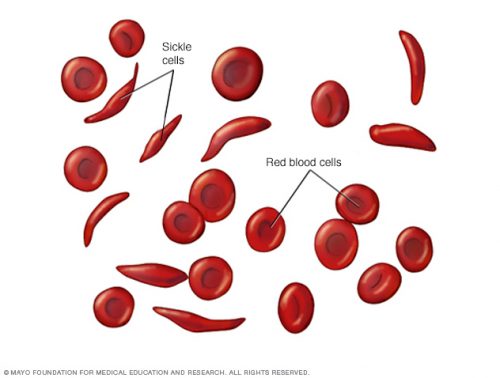Sickle Cell Disease (SCD) is a group of life-threatening, inherited disorders that affect the normal functioning of the red blood cells.
Our Story: Living with and Managing Sickle Cell Disease (Nicholas H.)
The four common syndromes in the group are:
- Sickle Cell Anemia (HbSS): Commonly, when people refer to sickle cell disease it is assumed that it is an interchangeable term for Sickle Cell Anemia. Sickle Cell Anemia is the most severe form of SCD. Individuals with this form also experience the worst symptoms at a higher rate.
- Sickle Hemoglobin C Disease (HbSC): Hemoglobin SC disease is the second most common type of sickle cell disease. It occurs when you inherit the Hb C gene from one parent and the Hb S gene from the other. Individuals with Hb SC have similar symptoms to individuals with Hb SS. However, anemia is less severe.
- Sickle Beta Thalassemia (HbS/B+): Sickle beta thalassemia disease is the least common syndrome next to the trait, sickle hemoglobin C disease, and sickle cell anemia. Although sickle hemoglobin C disease does not have a significantly higher incident rate, it is more commonly found in those of African and Hispanic descent. These two diseases cause more difficulties than the sickle cell trait, but are not as severe as sickle cell anemia.
- Sickle Trait (HbAS): People who only inherit a mutated gene hemoglobin S from one parent are said to have sickle cell trait. They may have no symptoms or reduced symptoms.
Common symptoms of Sickle Cell Disease include severe abdominal and bone pain, joint swelling pain, splenic sequestration, aplastic anaemia, vassocclusive crisis, organ damage and infection. Individuals affected with Sickle Cell Disease may also experience serious respiratory infections. Although Sickle Cell Disease is not curable at the moment, it can be managed by patients, their families and healthcare professionals with proper education and training.

How is Sickle Cell Inherited?
Sickle Cell disorders are inherited from parents to children through the haemoglobin of the red blood cells. Like most genes, haemoglobin genes are inherited in two sets, one from each parent. When a copy of the gene is inherited from only one parent, the child is said to have the Sickle Cell Trait. To have Sickle Disease the child must inherit two copies of the gene, 1 from each parent.
The above diagram illustrates the inheritance pattern of the haemoglobin gene. The examples shown from left to right gives four scenarios for Sickle Cell inheritance based on the genetics of the parents.
From left to right:
- The mother has Sickle Cell Disease and the father has the Sickle Cell Trait:
- 50% of the children have Sickle Cell Disease
- 50% of the children have the Sickle Cell Trait
- Both parents have Sickle Cell Disease:
- 100% of the children have Sickle Cell Disease
- The mother has normal haemoglobin and the father has the Sickle Cell Trait:
- 50% of the children have normal haemoglobin
- 50% of the children have the Sickle Cell Trait
- Both parents have the Sickle Cell Trait:
- 25% of the children have normal haemoglobin
- 50% of the children have the Sickle Cell Trait
- 25% of the children have Sickle Cell Disease

